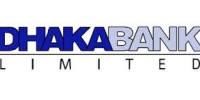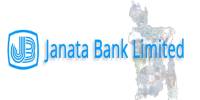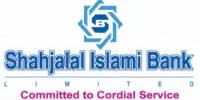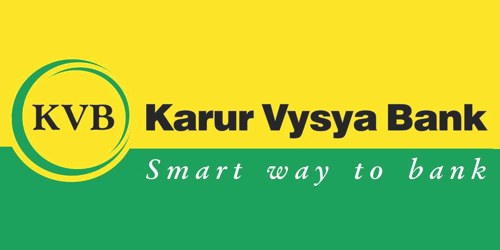Automated Cheque Clearing System in Shahjalal Islami Bank Limited
Sahjalal Islami Bank Limited –
History of SJIBL
Shahjalal Islami Bank Limited (SJIBL) commenced its commercial operation in accordance with principle of Islamic Shariah on the 10th May 2001 under the Bank Companies Act, 1991. During last twelve years SJIBL has diversified its service coverage by opening new branches at different strategically important locations across the country offering various service products both investment & deposit. Islamic Banking, in essence, is not only INTEREST-FREE banking business, it carries wise business product thereby generating real income and thus boosting GDP of the economy. Board of Directors enjoys high credential in the business arena of the country, Management Team is strong and supportive equipped with excellent professional knowledge under leadership of a veteran Banker Mr. Md. Abdur Rahman Sarker.
Vision
To be the unique modern Islami Bank in Bangladesh and to make significant contribution to the national economy and enhance customers’ trust & wealth, quality investment, employees’ value and rapid growth in shareholders’ equity.
Mission
- To provide quality services to customers.
- To set high standards of integrity.
- To make quality investment.
- To ensure sustainable growth in business.
- To ensure maximization of Shareholders’ wealth.
- To extend our customers innovative services acquiring state-of-the-art technology blended with Islamic principles.
- To ensure human resource development to meet the challenges of the time
Strategies
- To strive for customers best satisfaction & earn their confidence.
- To manage & operate the Bank in the most effective manner.
- To identify customers’ needs & monitor their perception towards meeting those requirements.
- To review & updates policies, procedures & practices to enhance the ability to extend better services to the customers.
- To train & develop all employees & provide them adequate resources so that the customers’ needs are reasonably addressed.
- To promote organizational efficiency by communicating company plans, polices & procedures openly to the employees in a timely fashion.
- To cultivate a congenial working environment.
- To diversify portfolio both the retail & wholesale markets.
Core Values
In the performance of these corporate missions, Shahjalal Islami Bank Limited (SJIBL) is guided by its corporate brand values with a Slogan:
AN UNIQUE; DYNAMIC; PROFESSIONAL; CARING AND TRUSTWORTHY BANK
A Unique Bank: Islamic Products are the Benchmark Reputed as the pioneer in Islamic banking; we helped to build the Islamic banking industry.
Dynamic: Progressive and Innovative SJIBL are constantly moving ahead as offering new and technologically advanced products and services.
Professional: SJIBL are knowledgeable and equipped to handle global business challenges
Caring: Approachable and Supportive Partner. SJIBL helps to fulfill every customer’s financial needs
Trustworthy: Dependable and Reliable. SJIBL offer and provide Shariah compliant products, services towards customers.
Corporate Social Responsibility
SJIBL foundation has drawn up programs to look after the education, health & Medicare requirements of the people of rural areas where the Bank has launched Rural Investment Program (RIP). The Bank has distributed scholarship in the year 2012 to poor but meritorious students with outstanding result in secondary school and higher secondary examination to facilitate them for pursuing their further studies without hindrance. The program of this education award will continue every year. Besides, during 2012 bank distributed Blanket to cold affected peoples throughout the country.
This year bank also donates two affected families of BDR tragedy, as part of its commitment. The Bank is conscious the responsibility of the society and people of Bangladesh as and when required situational Development Program will be gradually undertaken in future, In -sha-Allah. Shahjalal Islami Bank Limited Foundation has a plan to establish the following projects and programs also:
- Shahjalal Islami Bank Limited International School & College.
- Shahjalal Islami Bank Limited Hospital
SWOT Analysis of SJIBL
Shahjalal Islami Bank Limited is a big-size commercial bank of Bangladesh. But the bank is not much aged. The bank is about to grab the hi-tech facilities.
Strengths:
- A highly motivated team
- Reputation as an Islami Bank
- Wide branch Network
- Newly established core banking systems
- ATM network
- Corporate goodwill
- Collaboration with Q-cash members
- Financial strength
Opportunities:
- Big lucrative market
- Bank dependant economic
- Large number of people is still out of the banking services
- Services for the rural people.
Weakness:
- Limited ATM booths
- No SME financing specification.
- No branches even at each district
- Facilities only for city dwellers
- No customer differentiation
- Not using Business Intelligence or Competitive Intelligence
Threats:
- More modern banking services of other banks
- New competitors with new modern banking facility
- More acceptance of other banks to the corporate world
- More reach of other banks by more branches
PROJECT
Automatic Clearing House (ACH)
Automatic Clearing House (ACH) is a nationwide electronic funds transfer (EFT) system that provides for the inter-bank clearing of credit and debit transactions and for the exchange of information among participating financial institutions. The purpose of ACH is to exchange (clear and settle) electronic transactions. The Automated Clearing House is a secure, private electronic payment transfer system that connects all financial institutions of a country. Direct pay check deposits is an example of electronic fund transfer that are processed through this network.
Utilizing ACH payments is cheaper and faster than processing paper checks, both B2B (business-to-business) and B2C (business-to-consumer) e-commerce payment activities heavily rely on the ACH system and have helped give the system tremendous traction.
A Little History on ACH: Context of Bangladesh
The modernization of the payments and settlement system is one of the core objectives of Bangladesh Bank (BB). In November 2006, BB with the financial assistance from the United Kingdom Department for International Development (DFID) initiated a project called the Remittance and Payments Partnership (RPP), with the objective of promoting ‘pro-poor’ economic growth in the country. RPP consisted of several outputs. In plain sight of the project was to implement an Automated Clearing House (ACH) in the country, which will in-turn expedite the delivery of expatriates’ remittances. The broad objective of the project was to establish an international standard payment system to create avenues for participants to make faster and cheaper payments. Several renowned consultants were hired to contribute to the vendor selection and project implementation process who worked collaboratively with a dedicated Bangladesh Bank team that was developed to assist the whole process of implementation.
The project and BB directives encouraged banks to install core banking and thereby upgrade their own internal operations. Thirty-one banks now have their core banking systems (CBS) installed and the remaining (except for a couple) banks are at different stages of implementation of CBS and linking up all their branches countrywide.
In early 2009, the cheque design specification was finalized with active participation from consultants and the Bangladesh Automated Clearing House (BACH) vendor(s).
The functional specifications for both the Bangladesh Automated Cheque Clearing System (BACPS) and Bangladesh Electronic Funds Transfer Network (BEFTN) were finalized within mid 2009, and specific time lines were published to the participating banks to develop/install their systems accordingly. The second component of BACH, Bangladesh Electronic Funds Transfer Network (BEFTN) software was installed in the fourth quarter of 2010. The same BB team carried out the User Acceptance Testing (UAT) of the system and according to the plan the system integration & testing was performed with the participating banks. The system went into production on Feb.28, 2011 with 40 commercial banks technically ready for participation.
The BACPS started operations in October 2010 by replacing the manual cheque clearing system with image and date-based cheque truncation system where Magnetic Ink Character Recognition (MICR) encoded cheques (see appendix) are exchanged in encrypted form between the participating banks through a secured communication link.
BB is the organization responsible for developing the rules and the standards regarding ACH transactions. In January 2010, BB approved and distributed the operating rules and procedures regarding the ACH titles as “Bangladesh Automated Cheque Processing System BACPS: Operating Rules & Procedures”. In August 2010, BB also published operating rules for EFT titled as”Bangladesh Electronic Funds Transfer Network (BEFTN): Operating Rules”.
Through the automated system, the central bank cleared an average 85,000 regular value cheques and high value cheques worth Tk. 4,700 core in a day while some cases earlier took 7 to 30 days.
Bangladesh Automated Clearing House (BACH)
Bangladesh Automated Clearing House (BACH), the first ever electronic clearing house has started live operation in Dhaka from 7 October 2010. It has two components –
- Bangladesh Automated Cheque Processing System (BACPS) and
- Bangladesh Electronic Funds Transfer Network (BEFTN).
Bangladesh Automated Cheque Processing System (BACPS) is the electronic cheque processing of paper-based instruments, uses Cheque Imaging and Truncation (CIT) technology. The system supports both intra-regional and inter-regional clearing and is based on a centralized processing centre located in Dhaka and in designated clearing regions.
BACPS participants are all commercial banks and related Government offices.
Country wide use of MICR encoded standardized instruments. These instruments include Cheques, Drafts, Pay-Orders, Dividend and Refund Warrants, etc. has been ensured. At present 15,00,000 (approx.) regular and 90,000 high value cheques and other instruments are cleared through BACPS per month. Almost 90 percent of all the clearing instruments are now being cleared through BACH.
BEFTN is the maiden initiative for electronic (credit and debit) transfer of funds. This network facilitates the transmission of funds between the banks electronically, which makes it faster and efficient means of inter-bank clearing over the existing paper based system.
BEFTN is able to handle a wide variety of credit transfer applications such as payroll, foreign and domestic remittances, social security, company dividends, retirement, expense reimbursement, bill payments, corporate payments, government tax payments, veterans’ payments, government license fees and person to person payments as well as debit transfer applications such as mortgage payments, membership dues, loan payments, insurance premiums, utility bill payments, company cash concentration, government tax payments, government licenses and fees.
A state-of-the-art Data Center (DC) and a Disaster Recovery Site (DRS) have been established comprising of modern software and hardware for dealing with the operations of BACH. A Virtual Private Network (VPN) has been created using the communication links between the participating commercial banks and Data Center (DC) & Disaster Recovery Site (DRS).
Inauguration of BACH
The central bank of Bangladesh has launched its automated clearing house on 5th August 2010, on testing and trial basis that would function in full swing within a month or two.
Under the new system, the payment is settled using automated cheque clearing system and electronic fund transfer among 1100 bank branches in Dhaka initially.
The Bangladesh Automated Clearing House (BACH), the automated payment systems platform, has two components – the first one is Bangladesh Automated Cheque Processing Systems (BACPS) and the second Bangladesh Electronic Funds Transfer Network (BEFTN).
After implementation in Dhaka, the automated process is being spread to the regional clearing houses including Bangladesh Bank offices in Chittagong, Khulna, Rajshahi, Bogra, Sylhet, Barisal and Rangpur respectively.
Transactions received by the financial institution during the day are stored and processed later in a batch mode. Rather than sending each payment separately, ACH transactions are accumulated and sorted by destination for transmission during a predetermined period. This provides significant economies of scale. It also provides faster processing than paper checks, which must be physically handled. Instead of using paper to carry necessary transaction information, ACH transactions are transmitted electronically between financial institutions through data transmission.
Bank’s Benefits from ACH Payments
Commercial banks benefit from ACH payments. There’s no need to wait for customers to write checks and have them lost in the mail. ACH payments are received more quickly and reliably, and there’s no need to forward checks to the bank and wait for processing.
Businesses benefit from ACH processing in several ways:
- Payments are credited to the account immediately, so the banks don’t need to send (or drive, or walk) checks to the bank.
- There have possible fewer or no errors with ACH processing. Once it’s set up correctly for a client, it’s likely to work going forward.
- Bank can automate attempts to collect bad checks. ACH processing services often include this as part of their service, so you don’t have to deal with the same check twice.
Clients value of ACH Payments
Bank clients also benefit from ACH payments. There’s no need to write checks and get them into the mail on time. If using automatic ACH payments, they do not need to keep an eye out for bills – everything runs on autopilot for better or worse.
- No-hassles payments from
- Early check deposit
- Easy control and management of customer risk
- Eliminate cost and time of handling paper checks
- Enable auto-recurring billing from a bank account
- Secure bill pay online or over the phone
- Timely and efficient bill payment.
Business People Value of ACH Processing
- Allows for fast direct receipt of funds from a checking account
- Enables acceptance of payment from a host of methods including phone, WEB, or recurring billing
- Provides early notification of non-collection of funds
- Saves time and cost of invoicing
- Reduces collection calls
- Improves cash management forecasting
- Time saved in trips to financial institution
- Reduces number of late payments due to mail delivery issues, which reduces late fees
- A perfect means to increase customer retention
BACH Enables BB to Increase Cheque-Clearing Speed
The high value cheque clearing has doubled and the duration of clearing time has reduced significantly maximizing speedy payments as Bangladesh Bank is clearing high value cheques and regular value cheques with an automated cheque processing system, mentioned in BB news room in their website.
According to BB, of the total 85,000 cheques, 80,000 are regular value (below Tk. 5 lac) and the remaining 5,000 are high value (worth Tk. 5 Lac and above) cheques.
“Currently all regional clearing houses of BB have been brought under one central clearing system and clears items within a day”. Nazneen Sultana, deputy governor of Bangladesh Bank.
The number of high value cheques rose to 5,000 in the automated system from 2,000 in the manual system, and the number of regular value cheques also increased to 85,000 from 70,000 in the previous system. With the initiative, duration of cheque clearance reduced and its volume increased significantly, said BB officials. Under the automated system, Tk. 5,000 crore on average is cleared and transferred through the BACPS and BEFTN per day.
Description of the Project:
Operational Steps of Cheque Processing
The operational steps of cheque processing are noted as follows:
- A cheque deposit is accepted by the presenting bank.
- The cheque and optionally a deposit slip are passed for in house processing.
- The bank manually endorses the rear of the cheque in the designated area with the Bank stamp.
- All transactions [one or more cheques and optionally credit items] are processed via the banks chosen automated solution.
- All cheques are retained at the presenting banks location of choice.
- The front and rear images of the cheque and the MICR code line data are captured within groupings referred to as batches.
- At the point of cheque processing and scanning the rear of each document the bank’s capture device will put an endorsement line on the rear of the cheque
- All batches must be presented to the BACPS in a reconciled state i.e. the batch must contain a batch total to which all cheques are balanced. Code line correction must have been carried out to ensure that the routing number and transaction code are present and amount entry made to assign an amount electronically to each cheque.
- Batches must be packaged into an electronic files referred to as a Cheque Envelope [CE] in accordance with the already published standard for presentation to the BACPS.
- The presenting bank system will pass the CE, in this case referred to as an OCE (Outward CE), to a software application known as the Participant Bank Module (PBM) embedded within its own system for preliminary validation and transmission.
- The PBM will validate the structure of the OCE and the contents of records within the OCE.
- The PBM will reject, prior to transmission to the BACPS, any files failing validation.
- Files passing validation will be encrypted and assigned a Digital Signature by the PBM indicating the identity of the presenting bank.
- Files will be passed from the PBM application via the banks own chosen communication link to the BACPS.
Processing at Participating Bank Module: Outward Clearing
Participating Bank Module (PBM)
The BACPS Participating Bank Module (PBM) provides cheque envelope validation and provides an interface for sending and receiving cheque envelopes from and to BACPS.
Receiving Outward Presentment
The PBM will receive the duly balanced outward clearing files containing cheque image and electronic data from the capture system of the bank.
Image Quality Analysis and Failure Handling
All outward images are subjected to IQA (Image Quality Analysis) validations. Any image failing IQA validation will result in the rejection of the cheque envelope by the presenting bank PBM with an appropriate response file. The bank may re-scan and resubmit as many times as is necessary to meet the IQA requirements.
Item Processing
The outward cheque envelopes presented by the capture system are validated by the PBM against the validation indicated in the PBM Specifications. The PBM after validations generates response files which contain information related to acceptance or rejection of each file and the items present in each file with appropriate reason codes.
Session Attachment
The items are assigned to an appropriate clearing sessions that is open based on parameters fixed for a session by the Clearing House. These parameters are passed on to the capture system through the PBM. The item inherits ‘session date’ that is the business date of the session and session type (i.e. Regular and High value). If there is no appropriate session that is open, the items/bundles wait at the PBM until such a session opens.
Reconciliation of Outward Presentation
After End of Session at the Clearing House, PBM generates an Outward Acknowledgement File (OACK) containing the details of items those have been accepted for settlement at the Clearing House. It shall be the responsibility of presenting bank to reconcile their entire presentation by collating the information from the OACK files.
Processing at Participating Bank Module: Inward Clearing
Receipt of Inward Data/Images
The inward processing deals with accepting inward presentment data and images from the Clearing House and providing data in the form of files for use within the (paying) banks in-clearing system. The PBM will receive digitally signed inward electronic data and image exchange files from the Clearing House.
Validation
The PBM shall authenticate and load the exchange file data into the system. The PBM will send an acknowledgement exchange file to the Clearing House if the inward data exchange file or image exchange file is accepted.
Control Mechanism
The receiving point should verify that all the inward bundles/items have been received by it to ensure that there is no data loss in the transmission from clearing house to the PBM. The PBM supervisor shall compare the relevant information available from the ‘clearing house processing monitor’ and ‘inward exchange file screen’ for this purpose. The paying bank will not be able to generate posting files unless all the inward bundles/items have been actually received at the PBM. If any file is lost in transmission the bank may request the Clearing House for retransmission of images/data.
Generation of Posting File
The PBM, for each session, can generate posting files that may be used for interfacing with the banks accounting system. PBM is capable of creating posting files for payment processing for inward and outward clearing. The posting file may be sorted by the banks in any manner they desire for posting purposes (e.g. by bank, by branch, or by branch and transaction code).
Hardware and Software Installation for Clearing Process in SJIBL
MICR Scanner
Each Capturing Bank shall capture Images in accordance with the, BACPS Image Usability Standard and the BACPS Active Image Clearing Specifications (AICS). SJIBL uses Borrough check scanner machine which is used for scanning cheque.
Desktop PC
One particular PC is linked with the scanner machine and two other PCs are used for clearing function. One is for inward cheque processing and other is for outward cheque processing.
Bank Ultimus
This is the core banking software of SJIBL. This software is widely used from branch to the head office. This is the interface to query and to update the information. Different users have different level of access to this software. Bank Ultimus is totally centralized. For inward cheque processing this software is used for query client information, balance availability etc
Automated Cheque Clearing System (ACCS)
This is a web based software maintain by Bangladesh bank. SJIBL use this software to send and receive the scan copy of cheque. Return of cheque also receives by using this software with specified reasons mentioned in the return messages.
MICR Scanner used by SJIBL
MS Excel
Each participating bank is required to send the summery report of clearing transaction to the Bangladesh Bank in a prescribed manner. SJIBL uses MS excel software for preparing the report of each day differentiating with high value and normal value cheque.
Recommendations
A promptly and well managed clearing system indirectly motivates clients to deposit more in that particular bank. Bank that does better than others can gain competitive advantages. The more deposits the bank has the more opportunity to invest money. In order to gain customer satisfaction and increase in banks profitability, clearing services should be well planned and well articulated strategy for the long run. I have had the practical exposure in SJIBL for just two months. On the basis of my observation I would like to present the following recommendations-
- In Kawran Bazaar branch of SJIBL, the clearing department in far from the entrance point. So I hope it will better for clients if the point is near to the entrance of the bank.
- Clients are not very much aware about the charges of high value cheque. So there required to make awareness among the clients so that they become conscious about it.
- Making SMS to the clients for any dishonor cheque, pay order will increase customer satisfaction more.
- Most of the clients are not very aware about the automated clearing system, time required for clearing, closing time for a particular day. Also customers have little knowledge about online charges. So there should have a list of instruction and different charges applicable for different services.
- There have no facility of training for intern students. Introducing workshop or sort term period training for intern will enhance the performance and knowledge of the intern students.
- In each and every branch, the bank should have their own backup facility regarding the power system, server pc, internet connectivity for minimizing the service down time.
Conclusion
The BACPS started operations in October 2010 by replacing the manual cheque clearing system with image and date based cheque truncation system where Magnetic Ink Character Recognition encoded cheques are exchanged in encrypted form between the participating banks through a secured communication link.
Cheque receive from the clients of other bank to deposit in SJIBL is called outward cheque for SJIBL but inward for the paying bank. Image or data receive form ACCS is known as inward cheque for SJIBL. Based on the cheque amount there have two differentiation named as high value cheque and normal value cheque. The maximum value for normal value is less than half million and minimum value of high value cheque is half million. For high value cheque clearing bank charges a nominal fee.
Also for EFT over different branches, SJIBL charges online transaction fee from the client.
Since the inception of BACPS, SJIBL is working as a participated bank. Participating in the automated system, SJIBL can process more clearing transaction than before.
Also it enhances the performance of bank in clearing section. Processing cheque thorough the automated system also helps SJIBL achieve the competitive advantages than others.
















